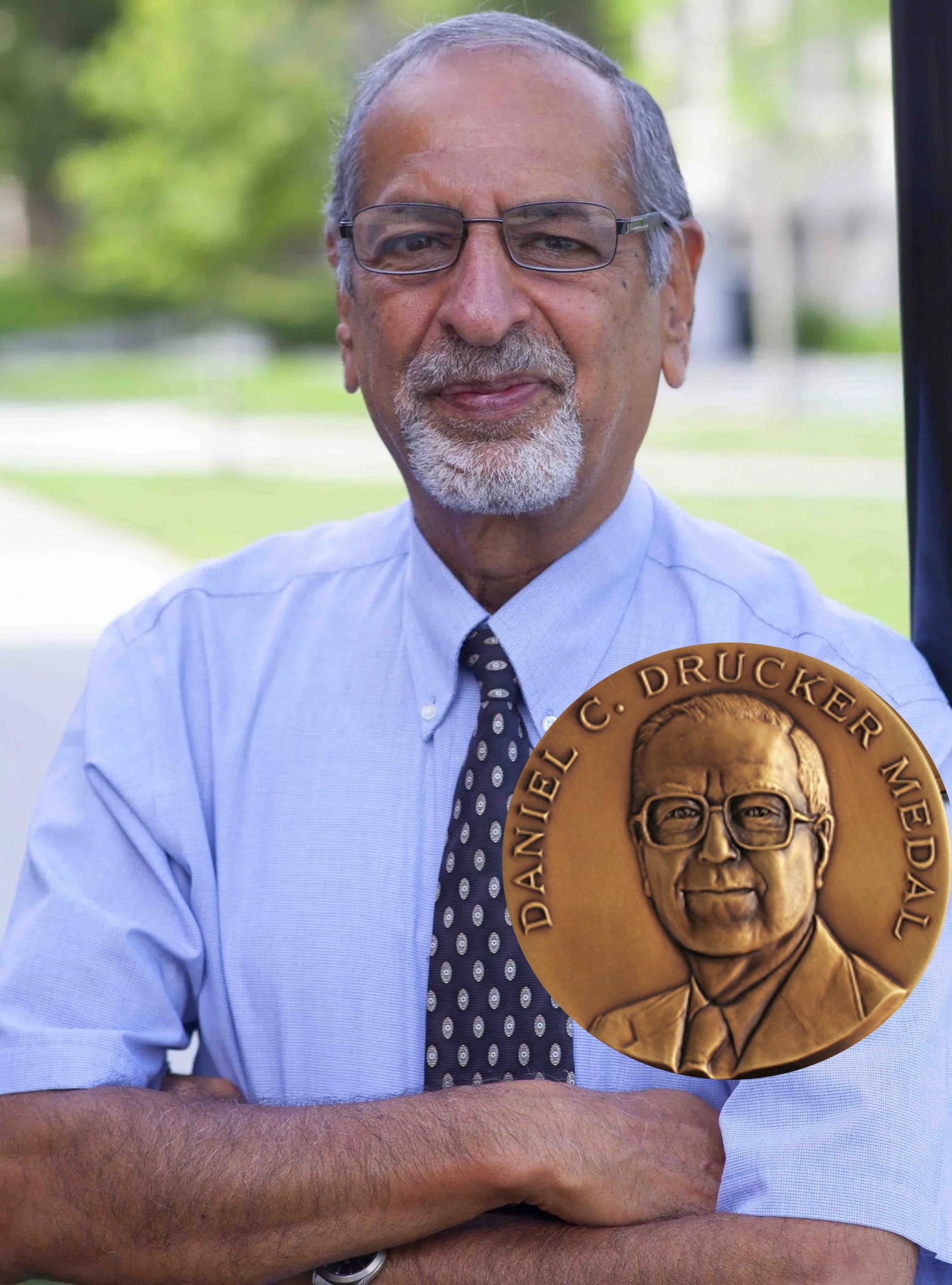By Hugh Markey
For the past 42 years, Prof. Arun Shukla has been a part of the URI mechanical, industrial, and systems engineering department, supervising over a hundred graduate students, conducting research, and making substantial contributions to the engineering community. Those efforts were recently recognized with the awarding of the Daniel C. Drucker Medal, given by the American Society of Mechanical Engineers (ASME). The award, established in 1997, is conferred in recognition of distinguished contributions to the field of applied mechanics and mechanical engineering. Shukla is happy to be recognized.
“I’ve received awards from many societies, but this one is big,” Shukla said. “When I heard that I had been nominated for this one, it really made me feel very accomplished and proud. I looked at the list of awardees and found that they’re all from top universities. The last few winners were from MIT, Princeton, Northwestern, and Stanford. These are all top universities the country, and to have URI represented in that distinguished group makes me feel very proud. It’s recognition that at least some parts of your work are recognized at the same level as those distinguished schools.”
Shukla is proud of the students he has shepherded through their pursuit of a master’s degree.
Much of his time has been devoted to working with the armed forces doing research on dynamic fractures, or as Shukla puts it, “studying how to break things and how to prevent breakage.” He examines the energy distribution at the moment of a catastrophic event such as what happens to an unmanned underwater vehicle (UUV) at the moment it is crushed by underwater pressure.
Shukla has been on the board of several prestigious professional organizations that contributed to the engineering community, including the Society for Experimental Mechanics where he served as president. The organization meets annually, and “In the 45 years that I’ve been a member, I’ve attended 43 meetings in person.”
It seems unlikely that Shukla is ready to rest on his laurels. Earlier that day, he had a meeting with MIT and CalTech to submit a project proposal to the Army, and had also done a presentation to 24 Navy representatives from all over the world. Although he turns 70 this year, he said, “I thought by this time I’d retire as my research wound down. However, things appear to be moving in the opposite direction.”
Sometimes those who work in my lab are so good that I come home and get upset with myself, thinking ‘How come I didn’t think of an idea like one of my students came up with?’ They think out of the box and come up with new ideas.

